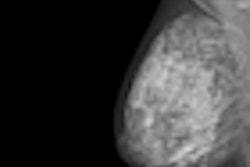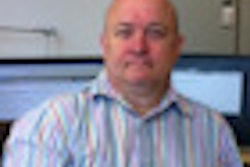Screening mammography may not save as many lives as previously estimated, claims a new study published online Monday in the Archives of Internal Medicine. Instead, the authors postulate that women are either being diagnosed early with no effect on their mortality, or are being "overdiagnosed" for cancers that represent no threat to their health.
The report adds fuel to a longstanding debate on the merits of screening mammography and its potential harms, which critics say include overdiagnosis, overtreatment, unnecessary patient anxiety, and higher healthcare costs (Arch Intern Med, October 24, 2011).
Persuasive messages
The most persuasive messages promoting screening mammography come from women who attest that the exam saved their life -- but other outcomes are possible, according to study authors Dr. H. Gilbert Welch, from the Dartmouth Institute for Health Policy and Clinical Practice, and colleague Brittney Frankel. A woman may have had her breast cancer detected early, yet not benefited from early detection because her cancer would have been equally treatable had it presented clinically, a possibility that becomes more likely as treatment for early breast cancer improves, Welch and Frankel wrote. Alternatively, a woman may have been overdiagnosed, i.e., diagnosed with a cancer not destined to cause symptoms or death.
It's important that the debate about screening mammography not be mislead by survivors' stories, Welch told AuntMinnie.com.
"The prevailing presumption in the public is that every woman who has a screen-detected breast cancer has benefited from [the screening]," he said. "But that can't be true, because if they were all benefiting, the mortality rate from breast cancer would be zero. There's this sort of paradoxical popularity: The more overdiagnosis we do, the more survivors there are, and people hear survivor stories or know a survivor and it increases the demand for more screening, looking hard for things to be wrong. [It would be better] to focus on the question of what we can do to mitigate the overdiagnosis problem and preserve whatever benefit mammography screening actually has."
Welch and Frankel developed a method to estimate the probability that a woman with screen-detected breast cancer actually had her life saved due to the exam. They estimated the 10-year risk of diagnosis and the 20-year risk of death using DevCan, the U.S. National Cancer Institute's software for analyzing Surveillance, Epidemiology, and End Results (SEER) data.
The authors' probability approach relied on two estimated possibilities for a woman in the general population of the U.S.: the probability of having breast cancer detected by screening and the probability of avoiding breast cancer mortality because of the screening.
"[We incorporated] a time horizon long enough to capture the downstream benefits of screening," they wrote. "Using a range of estimates on the ability of screening mammography to reduce breast cancer mortality, we estimated the risk of dying from breast cancer in the absence and presence of mammography in women of various ages."
Welch and Frankel estimated that for a 50-year-old woman, the risk of developing breast cancer in the next 10 years would be 2,990 per 100,000. In this age group, 64% of breast cancers are found by mammography, with an estimated risk of having a screen-detected breast cancer at 1,910 per 100,000 during the same period. The woman's observed 20-year probability of breast cancer death would be 990 per 100,000, according to the model.
Assuming that screening mammography would reduce the risk of breast cancer death by 20%, the risk of death in the absence of screening would be 1,240 per 100,000, suggesting that the estimated benefit of screening would amount to 250 lives per 100,000. This results in a 13% probability that a woman with screen-detected breast cancer would avoid breast cancer death because of mammography (250 out of 1,910, the ratio of the mortality benefit and the probability of having screen-detected breast cancer).
The probability of the same 50-year-old woman avoiding breast cancer death increases to 17% if screening mammography reduces breast cancer mortality by 25%, according to Welch and Frankel; however, the probability falls to 3% if screening mammography reduces breast cancer mortality by 5%. Similar analyses conducted for women of varying ages all yield probability estimates below 25%, they wrote.
The authors conceded that their study had limitations, including the assumption that the underlying disease burden of breast cancer is stable over time, the fact that their data on the risk of having screen-detected breast cancer depend on the accuracy of the estimated proportion of breast cancers found by screening mammography, and the assumption that the mortality benefit for screened women accrues for an additional 10 years after the 10-year screening period.
The biggest variable in their analysis was the variation of relative risk reduction attributable to mammography, Welch and Frankel wrote. The study used a range of values -- that screening mammography reduces breast cancer mortality anywhere from 5% to 25%. The values toward the higher end, however, reflect randomized trial data from more than 25 years ago, and readers of the study should be aware that there are both theoretical and empirical reasons to believe that this mortality benefit has declined over time.
"We believe that readers should focus on the values toward the low end (5% to 10%) and recognize that the probability that a woman with screen-detected breast cancer has, in fact, avoided a breast cancer death because of screening mammography is now likely to be well below 10%," they wrote.
Weighing benefits and risks
In a commentary following the study, Dr. Timothy Wilt and colleague Melissa Partin, PhD, note the researchers' concern that "overly inflated perceptions of the benefits of mammography may lead to a self-perpetuating cycle of unwarranted demand for screening, overdiagnosis, overtreatment, and a continually growing population of breast cancer survivors who advocate mammography." Wilt and Partin are both from the Minneapolis Veterans Affairs' Center for Chronic Disease Outcomes Research and the University of Minnesota, and Wilt is also a member of the U.S. Preventive Services Task Force (USPSTF).
Preventive healthcare services such as cancer screening can result in tremendous individual and public health benefits by identifying disease at early, more treatable stages, or by lowering a patient's risk of developing a disease altogether, Wilt and Partin wrote. But they don't always provide the expected benefit and can cause harms such as overdiagnosis and overtreatment: In fact, every medical intervention, no matter how beneficial for some patients, will offer continuously diminishing returns when applied to people at lower risk of having clinically relevant disease, they wrote.
What can doctors do to break a cycle of overdiagnosis? The opportunity -- and challenge -- for clinicians is to be a reliable source of information that ensures that patients are able to make well-informed decisions that incorporate the best evidence into their personal values, Wilt and Partin wrote. And clinicians don't have to rely on personal accounts from survivors, which may be prone to distortion and misinterpretation, to provide a simple and persuasive message about screening for their patients, Wilt told AuntMinnie.com.
"[Welch and Frankel's] study shows that while patient stories are often quoted [as testimony to screening mammography], they really may not be the best science behind clinical decision-making," he said.



















